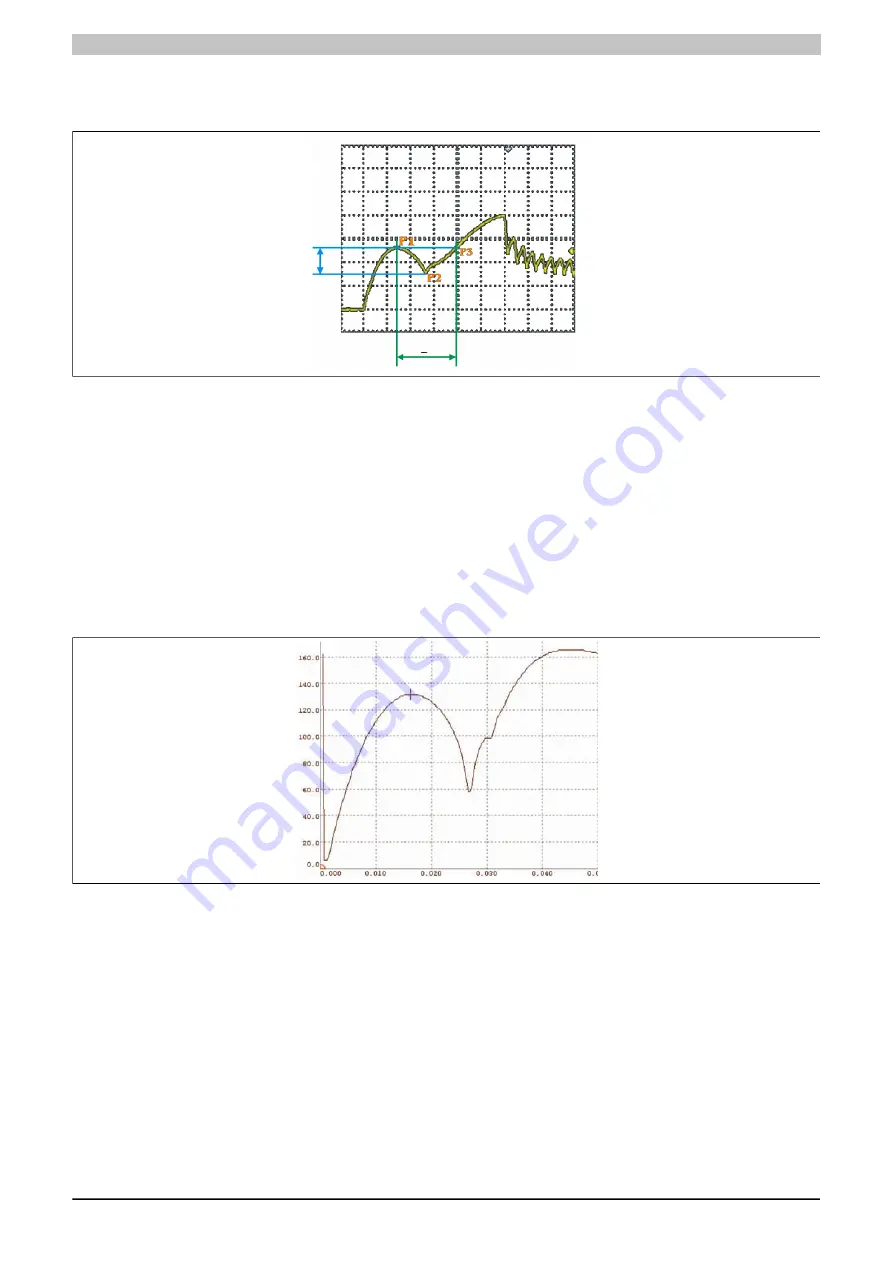
X20 system modules • Other functions • X20CM8323
2240
X20 system User's Manual 3.10
4.26.4.9.6 Configuring dI and dt
4.26.4.9.6.1 Procedure - Searching for switching points
dt
dI
Figure 751: Searching for switching points
The current in the inductance gradually rises when the valve is switched on. The valve starts to move mechanically
at a certain point. This process becomes noticeable due to a current dip that occurs as a result of the braking
voltage (anti-EMF) (point P1).
When this mechanical process is complete, the current returns to its original curve and continues to rise (point P2).
Point P3 and point P1 have the same current value, but different times.
A valid low-point, which simultaneously corresponds to the switching point, must meet the following criteria:
•
Point 2 must be lower than P1 by dI
•
The time between P1 and P3 must be longer than dt
4.26.4.9.6.2 Configuration example for dI and dt with trace data from Automation Studio
Figure 752: Search for the switching point with trace data from Automation Studio
The difference between the "current high-point" (P1 = 131) and the subsequent low-point (P2 = 58) is calculated
(P1 - P2 = 73). The module compares this difference to the configured parameter dl.
If the difference measured by the module is larger than the configured dl value, then the first condition for a switching
point search is met:
•
In the module, the parameter dl should therefore be set to at least 72.
The next criteria is the time between P1 and P3. This must be larger than the value set for the parameter dt.
According to the trace data, this is 4.43 ms:
•
In the module, the parameter dt should therefore be set to 43 (4430 µs / 100 µs).
With that, the second condition is met and a valid switching point can be detected.
It is recommended to avoid setting values all the way to the limits, since valves and relays change mechanically over
time, which can lead to faulty readings (unless you wish to detect every minor deviation from the reference curve).
Summary of Contents for X20 System
Page 2: ......
















































